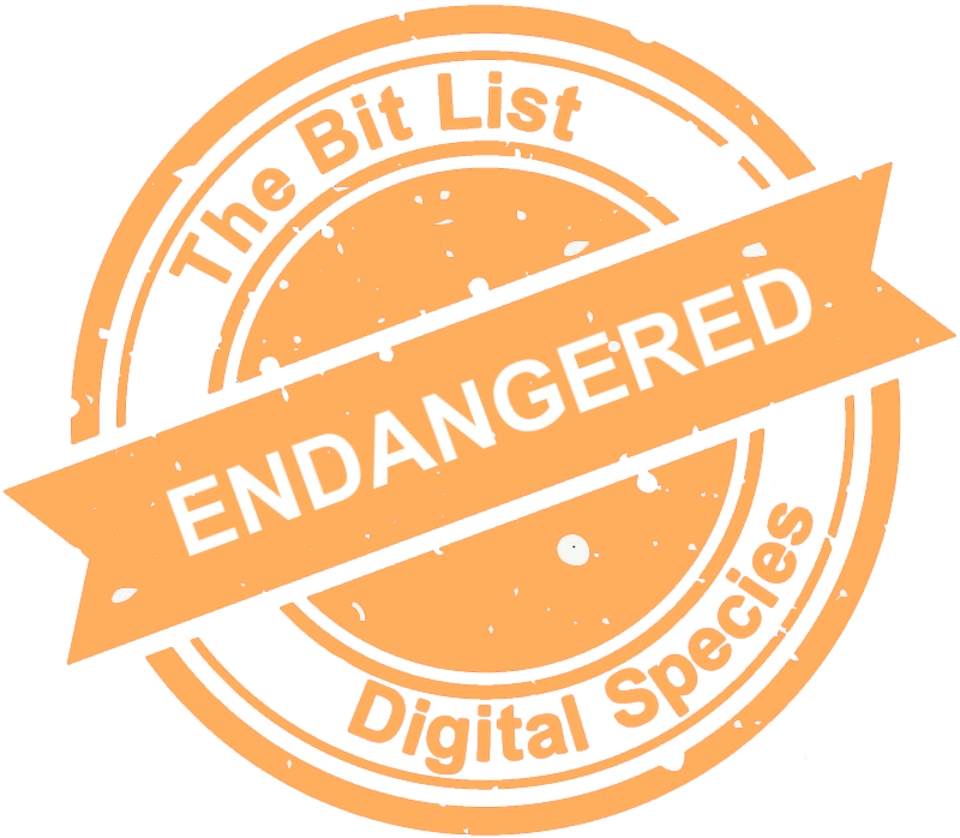Orphaned Works
 |
||
|
Digital materials where copyright is uncertain, disputed or unknowable, meaning that preservation actions are constrained or prevented. |
||
|
Digital Species: Orphaned Works |
Trend in 2023:
|
Consensus Decision |
|
Added to List: 2017 |
Trend in 2024:
|
Previously: Endangered |
|
Imminence of Action Action is recommended within three years, detailed assessment within one year. |
Significance of Loss The loss of tools, data or services within this group would impact on many people and sectors. |
Effort to Preserve | Inevitability Loss seems inevitable. Loss has already occurred or is expected to occur before tools or techniques develop. |
|
Examples Photographs, music recordings, literature. |
||
|
‘Critically Endangered’ in the Presence of Aggravating Conditions Lack of understanding of copyright; lack of documentation; dependencies resulting from hardware, software or media; lack of use resulting in lack of priority; lack of strategic investment in digital preservation; workflows that inhibit preservation of content that has not been licensed; encryption; poor storage. |
||
|
‘Vulnerable’ in the Presence of Good Practice Preservation pathway enabled; proven preservation plan applied; active effort to resolve IPR issues; institutional willingness to take risks for preservation. |
||
|
2023 Review When this entry was added in 2017, there was little evidence of any renewed effort to address the issue of orphaned work. While there have been improvements to the baseline competence of the archival and library professions in their understanding of copyright and the skills to preserve contents, this alone provides a narrow basis for optimism and the scale of the challenge is likely to have grown just as quickly if not more so as aggravating conditions become more prevalent too. The 2021 Jury added that while content is preservable, the preservation of orphan works is a matter of process and risk appetite. Added to the complexity are changes to copyright legislation in and across different national and regional contexts, particularly for UK institutions post-Brexit, as noted in the additional comments below. For this reason, there was a 2021 trend towards greater risk. The 2023 Council noted that this entry was trending towards greater risk as the longer orphaned works are left without preservation attention, the more vulnerable they become. The complexity of copyright legislation as well as works that cross over several domains/institutions adds to this increased risk. They additionally recommended that, given Orphaned Works is both a species and an entry, that the next major review for the Bit List includes a rescoping and splitting of this entry to cover the broad spectrum of Orphaned Works and their various preservation issues and efforts |
||
|
2024 Interim Review The 2024 Council agreed with a 2023 recommended rescoping of Orphaned Works as both a species and an entry. Intellectual property rights impact every category, so it is better to embed considerations of it throughout relevant entries than to keep it as a single entry and standalone species. These considerations have been incorporated into key elements and examples to relevant entries throughout the current Bit List, and the Orphan Works species and entry will be removed from the next 2025 Bit List. |
||
|
Additional Comments A risk-based approach is recommended for organizations. Copyright infringements are only likely to become a significant issue in the context of access, and in most cases, the likelihood of any specific action is small. Preservation needs to be presented as a social good, one without which copyright holders would simply be unable to benefit from the property rights they seek to protect. For UK institutions, the 2021 Jury recommended commentary by Naomi Korn on the status of orphan works and the impact of Brexit – that UK institutions are no longer able to make use of the EU Orphan Works Directive and the alternative Orphan Works Licensing Scheme is costly. A list of resources is available at https://naomikorn.com/resources/. For those in the UK, there is also the UK Copyright and Creative Economy Centre (CREATe) for resources on orphan works and copyright more broadly at https://www.create.ac.uk/resources/. Case Studies or Examples:
|
||





































































































































